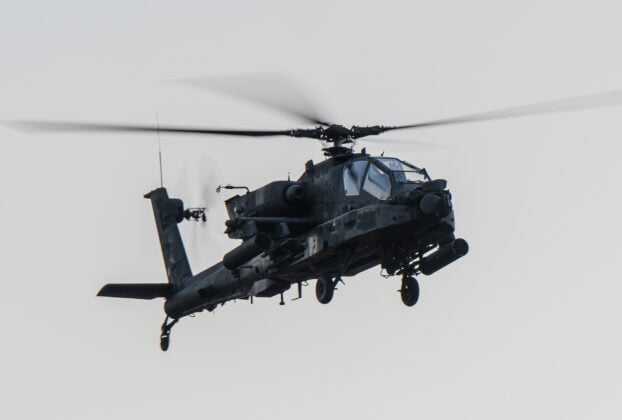
U.S. Army AH-64 Apache helicopter crews from the 1st Armored Division conducted deep strike live-fire exercises in Lithuania on September 9, just miles from the Belarusian border where Russia and Belarus have launched a joint military drill known as Zapad 2025.
The training involved AH-64 helicopters assigned to the 1st Battalion, 501st Aviation Regiment, 1st Combat Aviation Brigade, operating out of Camp Herkus. During the exercise, Apache crews flew coordinated strike missions toward designated target areas, engaging simulated enemy positions in a high-tempo combat scenario.
According to the U.S. Army, these live-fire operations are part of a broader effort to reinforce America’s commitment to NATO’s eastern flank and maintain collective defense capabilities in coordination with allied forces.
“The training reinforces our ability to respond rapidly and precisely in support of regional security,” said a statement from the 1st Combat Aviation Brigade.
The exercise coincides with the start of Zapad 2025, a joint Russian-Belarusian military exercise involving approximately 30,000 troops, according to Lithuanian military intelligence. The drills, which span multiple training grounds across Belarus, are viewed by neighboring states as a deliberate show of force.
In a recent statement, Lithuanian defense officials warned that the scope and structure of Zapad 2025 suggest Russia is preparing for future combat operations in Europe. Lithuanian military intelligence said the drills appear to simulate large-scale offensive maneuvers, including the deployment of airborne forces, long-range strikes, and cross-border coordination.
While Russia claims the exercise is defensive in nature, NATO officials have repeatedly expressed concern that such drills are often used to mask real troop deployments or to test readiness for offensive campaigns.
U.S. forces have ramped up their presence in the Baltic states since 2022, conducting regular joint drills with Lithuanian, Latvian, and Estonian armed forces. Apache helicopter units, in particular, have become a key component of forward-operating combat aviation capabilities in the region, offering precision firepower and rapid strike potential.
According to the Pentagon, U.S. aviation brigades deployed in Europe are positioned to provide immediate response capabilities in the event of crisis, and their training in frontline NATO states helps sustain mission readiness.